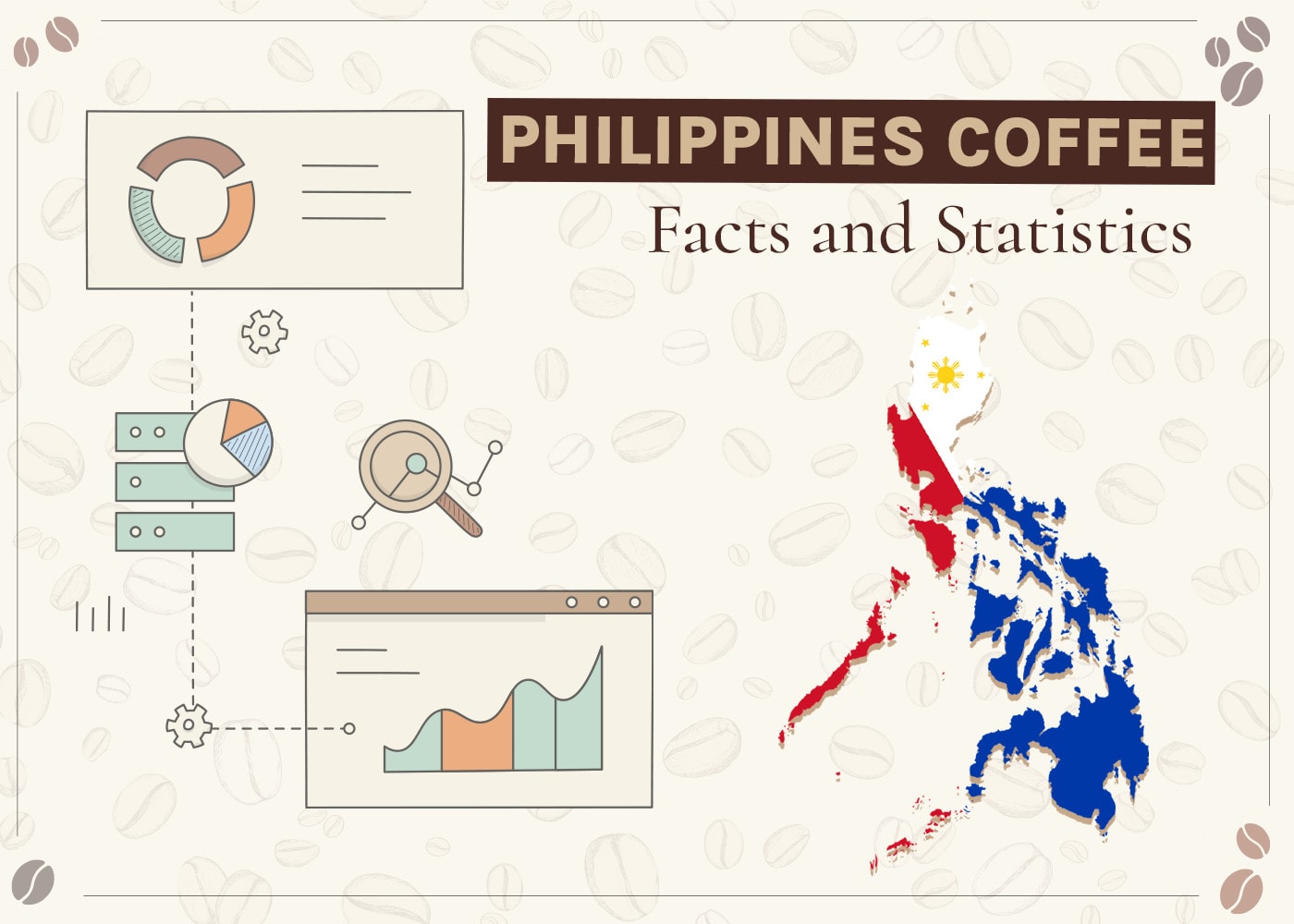
Note: This article’s statistics come from third-party sources and do not represent the opinions of this website.
As one of the most popular beverages in the world, behind water, it is hardly surprising that Filipinos share the global love of the brown stuff. Perhaps more surprising is the fact that the Philippines is one of a small number of countries that can grow all four main types of coffee beans and was once the fourth-largest producer of coffee in the world. However, following incidents of coffee rot and the subsequent replanting of coffee farms as sugarcane farms, the Philippines now imports most of its coffee, used primarily for making instant coffee, from Vietnam.
Click below to jump ahead:

Top 15 Coffee Consumption in the Philippines Statistics & Facts
- Coffee was introduced to the Philippines in 1740.
- The Philippines was once the fourth-largest coffee-producing country in the world.
- The Philippines is one of the few countries that grows all four types of coffee beans.
- Most of the coffee imported to the Philippines comes from Vietnam.
- In 2021, Filipinos consumed 3.05 kilograms of coffee per person.
- Filipinos are projected to spend an average of $44 per person on instant coffee in 2022.
- Filipinos are expected to consume 3.78 kilograms of coffee per person by 2025.
- The Philippines is the second-largest consumer of coffee in Asia.
- Before the effects of the Covid pandemic, Filipinos were consuming 3.4 kilograms of coffee per person per annum.
- 90% of households in the Philippines have coffee in their cupboards.
- 80% of Filipinos drink an average of 2.5 cups of coffee per day.
- 93% of households buy some coffee every week.
- Filipinos are now considered heavy coffee drinkers.
- Starbucks is, by far, the biggest coffee shop chain in the Philippines.
- The average cost of a cup of coffee in a coffee shop is $3.02.
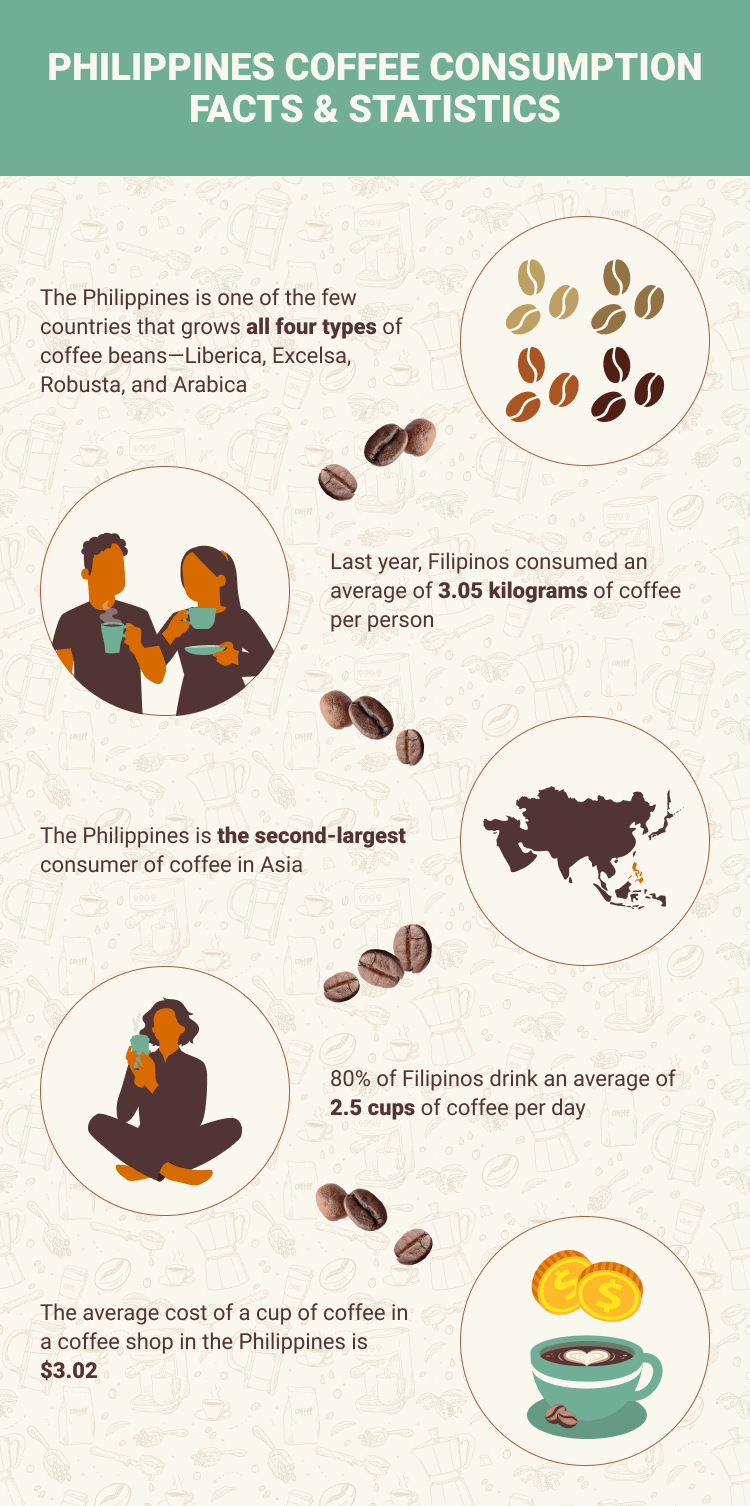

Coffee in the Philippines
1. Coffee was introduced to the Philippines in 1740.
(Onstarplus)
Although exact details are unknown, it is believed that coffee was first introduced to the Philippines in 1740 when Franciscan Friars brought the first coffee tree to the country. Coffee grew through the Batangas and Lipa became the coffee capital of the Philippines. Within 100 years, the Philippines was selling its coffee overseas, including to America, and, following the opening of the Suez Canal, exports spread through Europe.

2. The Philippines was once the fourth largest coffee-producing country in the world.
(Philippines Coffee Board)
By 1880, the Philippines was believed to be the fourth-largest exporter of coffee beans. In fact, when coffee rust struck, spreading out from Ceylon, the Philippines was the only exporter of coffee beans. However, coffee rust also struck here, too. By 1890, all the coffee trees in Batanga had succumbed to the fungal disease. Many wealthy coffee growers and landowners converted their decimated coffee plantations to growing sugarcane, and while some coffee is being grown again, the Philippines has never really reached its previous coffee-producing heights.
3. The Philippines is one of the few countries that grows all four types of coffee beans.
(Philippines Coffee Board)
There are four types of coffee beans: Liberica, Excelsa, Robusta, and Arabica, and each has its own ideal growing requirements. The Philippines is one of only a handful of countries in the world that grows all four varieties, and it is in the heart of The Bean Belt—a region of 50 countries that stretch across the equator and have ideal coffee growing conditions.
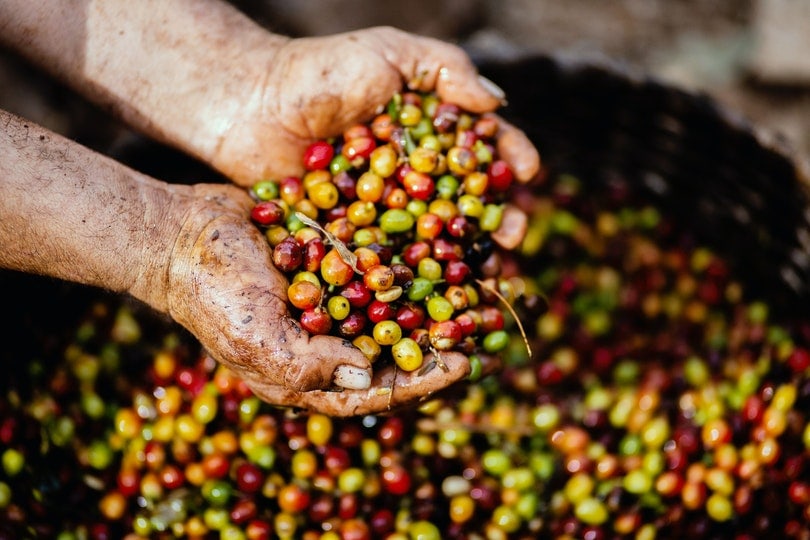
4. Most of the coffee imported to the Philippines comes from Vietnam.
(PhilippinesAroundTheWorld)
Although Brazil is the leading exporter of coffee beans in the world, the Philippines gets most of its imported coffee from Vietnam. In fact, in 2018, Brazil did not even feature in the country’s top 10 providers of beans. The four leading suppliers were Vietnam, Malaysia, Indonesia, and Singapore, responsible for providing more than 97% of the country’s coffee.

Philippine Coffee Consumption
5. In 2021, Filipinos consumed 3.05 kilograms of coffee per person.
(PhilStar)
Coffee consumption has changed significantly over the past two years. Covid lockdowns have seen people consume more of their favorite beverages at home, but it has also meant that coffee growers have been unable to harvest all of their crops. Despite this, Filipinos consumed the equivalent of 3.05 kilograms of coffee per person in 2021.
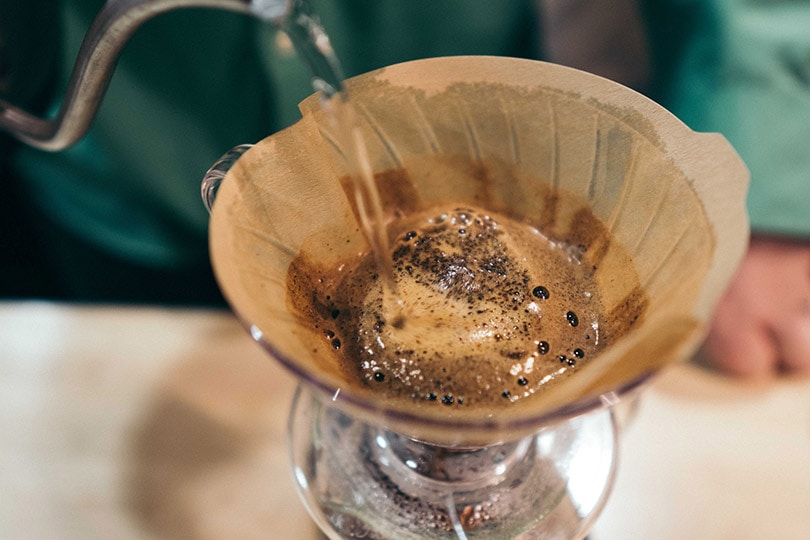
6. Filipinos are projected to spend an average of $44 per person on instant coffee in 2022.
(Statista 1)
Filipinos love their instant coffee. It’s easy to make, difficult to get wrong, and provides a familiar taste with every cup. Such is its popularity that revenue from instant coffee in the Philippines is expected to total $4.95 billion in 2022, which equates to the equivalent of $43.99 per person.
7. Filipinos are expected to consume 3.78 kilograms of coffee per person by 2025.
(PhilStar)
Within 3 years, experts expect Filipinos to be consuming an average of 3.78 kilograms of coffee per person, up from 3.05 kilograms of coffee in 2021. This represents an increase of 23% and will push figures higher even than the Covid slump, but will push it beyond pre-Covid levels and represent the biggest increase in the Asian market.

8. The Philippines is the second-largest consumer of coffee in Asia.
(StirTeaCoffee)
Japan represents the largest individual coffee-consuming market in Asia, but the Philippines comes in second place. And the country’s growers are taking steps to further improve the quality of the coffee they grow.
9. Before the Covid pandemic, Filipinos consumed 3.4 kilograms of coffee per person per annum.
(PhilStar)
Figures suggest that, globally, people consumed as much coffee in the morning during the pandemic but less coffee in the afternoons. Whatever the reasons, Covid had a major effect on coffee consumption in the Philippines. Coffee consumption was equivalent to 3.4 kilograms per person in 2019, before Covid struck, which means that 2020’s 3.05 kilograms was a 10% drop on the year.
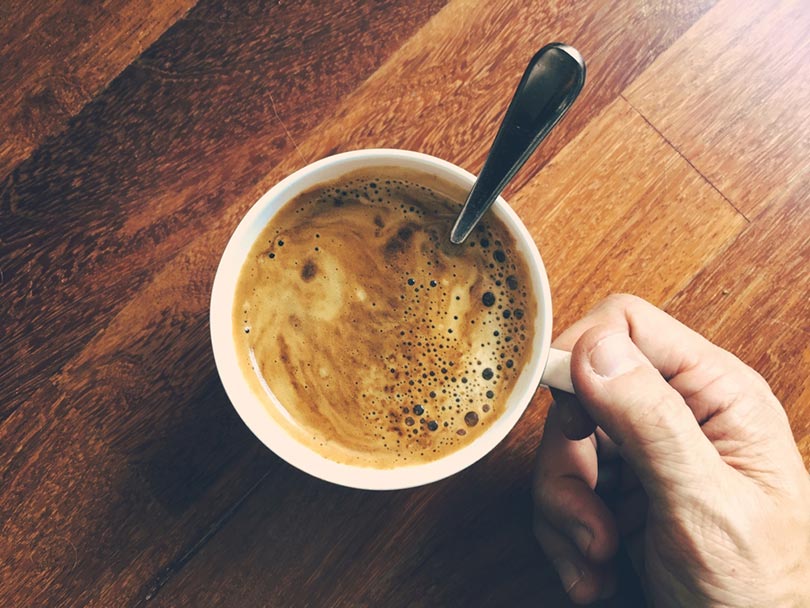

Coffee Popularity
10. 90% of households in the Philippines have coffee in their cupboards.
(IntagriJournal)
Like most coffee-consuming countries around the world, the Philippines has a combination of low-cost coffee and premium-grade coffee. And coffee drinking isn’t reserved solely for the coffee connoisseur or a specific age group. Roughly 90% of households have at least some coffee in their cupboards.
11. 80% of Filipino adults drink an average of 2.5 cups of coffee per day.
(IntagriJournal)
Not only do the vast majority of homes have coffee on hand, but 8 out of 10 adults have an average consumption level of 2.5 cups of coffee every day. Recent increases have been seen in the consumption of instant and specialty coffee in the country.

12. 93% of households buy some coffee every week.
(Onstarplus)
About 93% of households claim to buy some coffee every week, suggesting that even those that don’t consume several cups per day still enjoy at least the occasional latte or cappuccino.
13. Filipinos are now considered heavy coffee drinkers.
(IntagriJournal)
Such has been the increase in Filipino coffee drinking habits that the country has been upgraded from moderate to heavy coffee drinkers that buy coffee, on average, twice a week. Their preferred coffee purchase is a 3-in-1 coffee mix, which combines coffee, sweetener, and creamer in a single soluble mix.
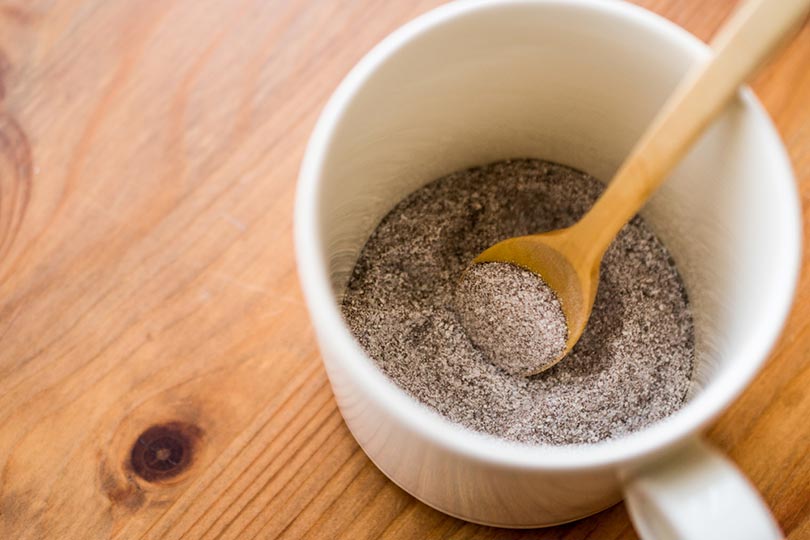
14. Starbucks is, by far, the biggest coffee shop chain in the Philippines.
(Statista 2)
Starbucks is the largest coffee chain in the world with branches in almost every country of the world, including the Philippines. In fact, Starbucks is the most popular coffee chain. The country’s most popular coffee chain made sales equivalent to $155 million in 2020. The next largest chain is The Coffee Bean and Tea Leaf, but they only managed $17.54 million in sales during the same period: significantly less than the American coffee brand.
15. The average cost of a cup of coffee in a coffee shop is $3.02.
(SavingSpot)
The cost of a cup of coffee made at home can be as little as a few cents, but Filipinos are happy to pay a lot more than this for a cup of coffee shop coffee, with the average cost in the Philippines of $3.02. This means that the country has the 46th most expensive average coffee price in the world. For reference, South Koreans pay the most at a massive $7.77 per cup while, in Iran, coffee lovers only have to pay $0.46 per cup.


Frequently Asked Questions
Why Are the Batangas Famous for Coffee?
When coffee was first introduced to the Philippines, it was grown primarily in the Batangas. While its production did spread from the region, the Batangas remain an integral part of Philippine coffee growing. Today, it is home to the kapeng barako coffee. It is a Liberica coffee with a strong flavor that comes from the high-altitude region of Lipa in the Batangas. It is usually served black, but cream is sometimes added, and brown sugar is used to sweeten it. (Batangas Philippines)
How Big Is the Coffee Industry in the Philippines?
Coffee is very popular in the Philippines, and this popularity only looks set to increase. In US dollars, the market is expected to be worth $5.82 billion in 2022, compared to $85 billion in the US. (Statista 3)
Does the Philippines Export Coffee?
Even though the Philippines is uniquely positioned as one of the few countries in the world that grows all four variants of the coffee bean, the country’s coffee consumption greatly outstrips its production. As such, very little coffee is exported. Coffee exports account for less than 0.01% of the country’s global trade. (Philippines Department of Trade and Industry)

Final Thoughts
Coffee is one of the world’s most popular beverages and this is certainly true in the Philippines, where figures suggest that 8 in 10 adults consume an average of 2.5 cups per day. Most 3-in-1 coffee mixes, which include sweetener and creamer as well as coffee, are the preferred purchase for at-home coffee making, while Starbucks is the most popular coffee shop chain in the country. And, following the cessation of Covid lockdowns, the country’s consumption is expected to continue to grow over the next 3 years.
Table of Contents
- Top 15 Coffee Consumption in the Philippines Statistics & Facts
- Coffee in the Philippines
- Philippine Coffee Consumption
- 5. In 2021, Filipinos consumed 3.05 kilograms of coffee per person.
- 6. Filipinos are projected to spend an average of $44 per person on instant coffee in 2022.
- 7. Filipinos are expected to consume 3.78 kilograms of coffee per person by 2025.
- 8. The Philippines is the second-largest consumer of coffee in Asia.
- 9. Before the Covid pandemic, Filipinos consumed 3.4 kilograms of coffee per person per annum.
- Coffee Popularity
- 10. 90% of households in the Philippines have coffee in their cupboards.
- 11. 80% of Filipino adults drink an average of 2.5 cups of coffee per day.
- 12. 93% of households buy some coffee every week.
- 13. Filipinos are now considered heavy coffee drinkers.
- 14. Starbucks is, by far, the biggest coffee shop chain in the Philippines.
- 15. The average cost of a cup of coffee in a coffee shop is $3.02.
- Frequently Asked Questions
- Final Thoughts















